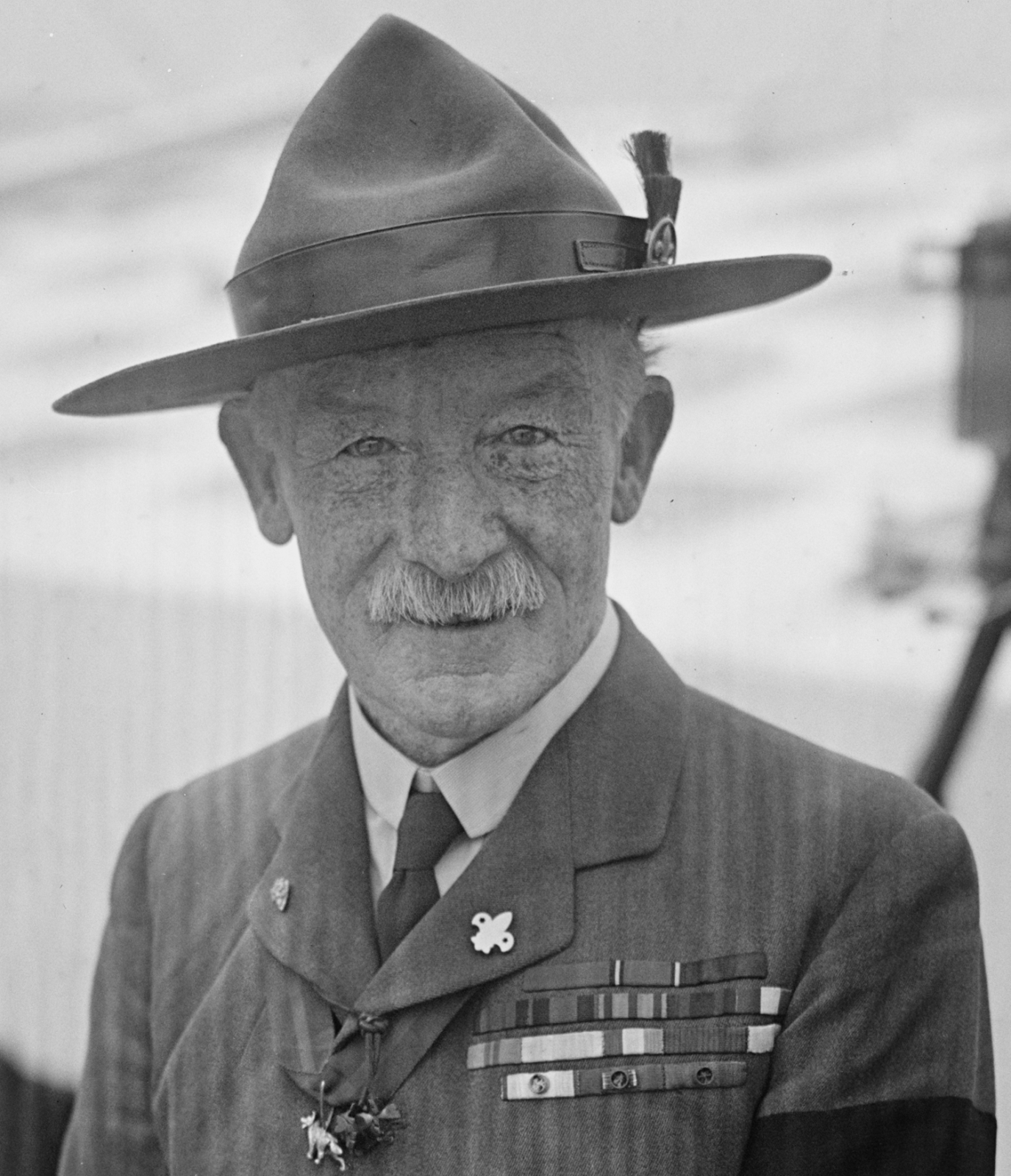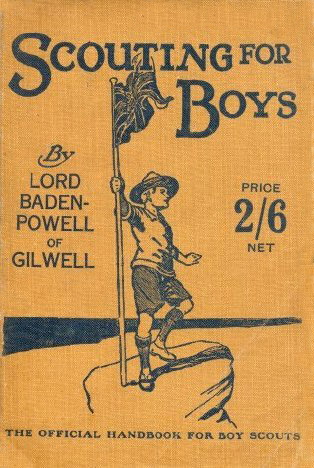Some background
First off, I should explain why I, a grown man living in the United States in the early 21st century decided to read a book written to British boys at the beginning of the 20th. A few times I told someone I was reading this book I got a queer look (or innuendo about what “scouting for boys” meant). So here goes.
My oldest daughter had just started to be involved with Girl Scouts. She had been to a few meetings and my wife and I were discussing whether she should really be involved with one more activity. That’s probably the opposite of how things should go, but it is the sort of thing that happens more often than not in our house.
Anyway, this led me to reflect on my own experiences with Cub Scouts and Boy Scouts. While I didn’t last very long in Boy Scouts I realized that Cub Scouts was probably one of the most important things in my life at the time. There were a lot of good memories from the kids in my Webelos group. I was taught what it means to be a good citizen and was encouraged to develop a good character. And, I learned a few skills I don’t think I could have learned any other way than going through a scouting program.
After hearing my wife report back from a Girl Scout camping trip and other the other Girl Scout gatherings, it became clear to me that Girl Scouts is not very much like the Scouting programs we have for boys. After reading the Daisy Handbook and looking at the Girl Scout website it looked like Girl Scouts is focused on STEM and nature experiences as well as developing good character and fiscal responsibility in girls. These are noble goals to be sure. However, they didn’t strike me as exactly what the Scouting movement was all about in the beginning. This made me what to research the Scouting movement in general.
 The Scouting movement began when Lord Robert Baden-Powell, after years of experience as a military scouting, wrote a small book on the subject called Aids to Scouting. This quickly became popular with young boys as a means to learn scoutcraft and have a good bit of fun. Adults started teaching the subject to young men and the movement grew quickly and organically. The idea of young boys being taught military scouting apparently terrified B-P (as he’s affectionately referred in the scouting movement), he decided, after holding the first scout camp on Brownsea Island, to rewrite his book as a guide to being a “peace scout” for boys. Soon after girls wanted to be involved as well. Scouting evolved over several decades and many organizations started including subjects outside of traditional scout craft (see selling cookies and after-school STEM programs.) to appeal to a more modern audience of young people.. Now most organizations around the world have co-ed scout troops. So, groups like the Boy Scouts of America and Girls Scouts USA are the exception not the rule.
The Scouting movement began when Lord Robert Baden-Powell, after years of experience as a military scouting, wrote a small book on the subject called Aids to Scouting. This quickly became popular with young boys as a means to learn scoutcraft and have a good bit of fun. Adults started teaching the subject to young men and the movement grew quickly and organically. The idea of young boys being taught military scouting apparently terrified B-P (as he’s affectionately referred in the scouting movement), he decided, after holding the first scout camp on Brownsea Island, to rewrite his book as a guide to being a “peace scout” for boys. Soon after girls wanted to be involved as well. Scouting evolved over several decades and many organizations started including subjects outside of traditional scout craft (see selling cookies and after-school STEM programs.) to appeal to a more modern audience of young people.. Now most organizations around the world have co-ed scout troops. So, groups like the Boy Scouts of America and Girls Scouts USA are the exception not the rule.
Seeing that internationally most scouting programs are co-ed peaked my interest. I don’t see a lot of value in segregation and I think my daughters would be interested in getting outdoors, learning survival skills, tracking animals, etc. I started looking for similar organizations for younger kids in the US. There are a fair number of co-ed scout-like programs for children which are open to everyone regardless of gender identity, sexual preference, religion or lack of religion (all of which the BSA has an iffy history with at best). While I’m sure most if not all of these are great organizations most of them did not seem “scouty” enough to me.
Enter the Baden-Powell Service Association (BPSA), they do not have any restrictions on membership, co-ed groups (as long as the adult leadership is co-ed as well) and a traditional scouting program. They attempt to base everything on the original teachings and writings of Lord Baden-Powell as much as legally and logically possible.
My oldest daughter had just started to be involved with Girl Scouts. She had been to a few meetings and my wife and I were discussing whether she should really be involved with one more activity. That’s probably the opposite of how things should go, but it is the sort of thing that happens more often than not in our house.
On to the book
 Since BPSA bases its program in large part on Scouting for Boys they have it available to download for free. I’d been meaning to read this for a while. I’ve heard it’s full of fun useful information to begin with, whether or not you are interested in Scouting. Seeing as how my interest was suddenly peaked I couldn’t resist downloading the PDF and tearing through it. Its pages did not disappoint.
Since BPSA bases its program in large part on Scouting for Boys they have it available to download for free. I’d been meaning to read this for a while. I’ve heard it’s full of fun useful information to begin with, whether or not you are interested in Scouting. Seeing as how my interest was suddenly peaked I couldn’t resist downloading the PDF and tearing through it. Its pages did not disappoint.
Scouting for Boys covers a wide range of subjects. Camping, tracking, pioneering and first aid all get long sections as well as citizenship, chivalry, the worldwide brotherhood of scouting and the British Empire. The book also outlines the patrol system, court of honour, scout promise, law, motto and slogan. All of these give scouts a chivalrous moral code and make Scouting the fraternal order that it is.
I found the patrol system and the court of honour particularly interesting. Traditional scouting places a lot of the responsibility for leadership on the young people themselves. In fact after reading some other scouting material from the 1940’s I discovered that essentially the (adult) troop master’s job was to train the patrol leaders and their seconds to earn their tenderfoot and other badges. The patrol leaders were responsible for teaching and training all the others scouts. Through the court of honour the patrol leaders also run the whole troop, with only guidance from the scoutmaster. That’s not at all how I remember Boy Scouts being ran when I was a kid. This is great for developing leadership in children, which is a skill not easily taught in school or most other activities.
Scouting is mostly intended to be learned through games. Scouting for Boys suggests several games for patrol leaders to choose from with adult leaders acting as referees. Some of these are pretty intense. For example one game for teaching “sea scouting” called Whale Hunt involves two patrols of scouts rowing separate boats from opposite direction with the goal of harpooning a “whale” made from logs let loose in the middle. The patrol that reaches the whale first harpoons it and starts rowing back to their side. The other patrol tries to catch up with them to harpoon the whale to row it back their own side. The result is some kind of crazy row boat tug-of-war which I imagine lasts quite a while and doesn't sound terribly safe.
I found the patrol system and the court of honour particularly interesting. Traditional scouting places a lot of the responsibility for leadership on the young people themselves. In fact after reading some other scouting material from the 1940’s I discovered that essentially the (adult) troop master’s job was to train the patrol leaders and their seconds to earn their tenderfoot and other badges. The patrol leaders were responsible for teaching and training all the others scouts. Through the court of honour the patrol leaders also run the whole troop, with only guidance from the scoutmaster. That’s not at all how I remember Boy Scouts being ran when I was a kid. This is great for developing leadership in children, which is a skill not easily taught in school or most other activities.
Comments
Post a Comment